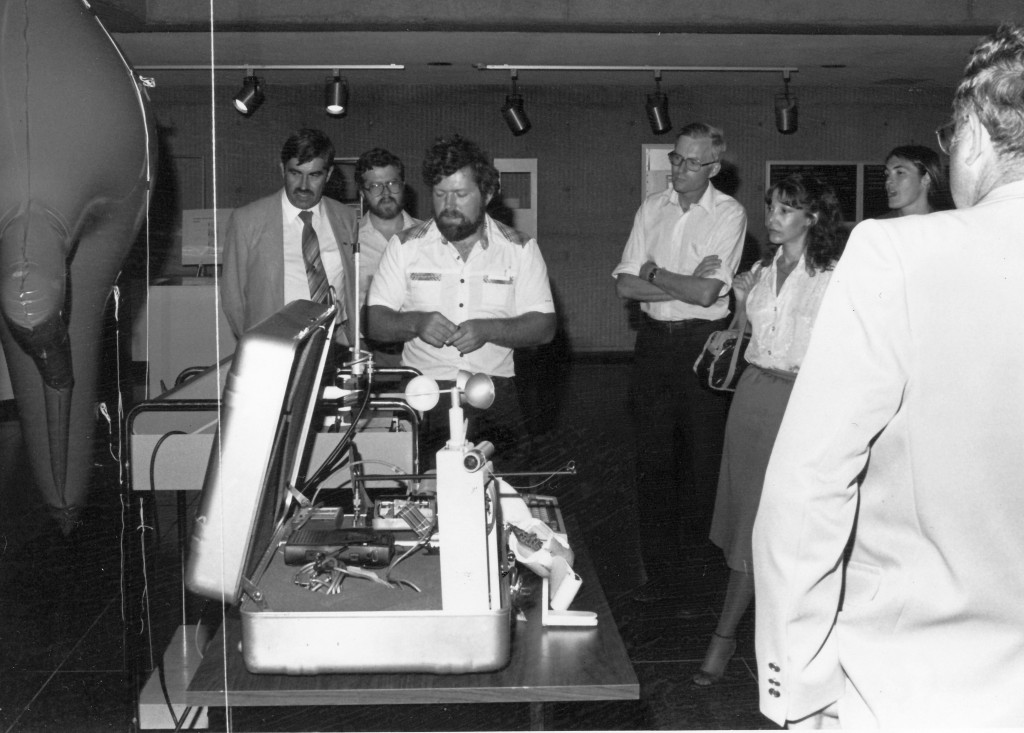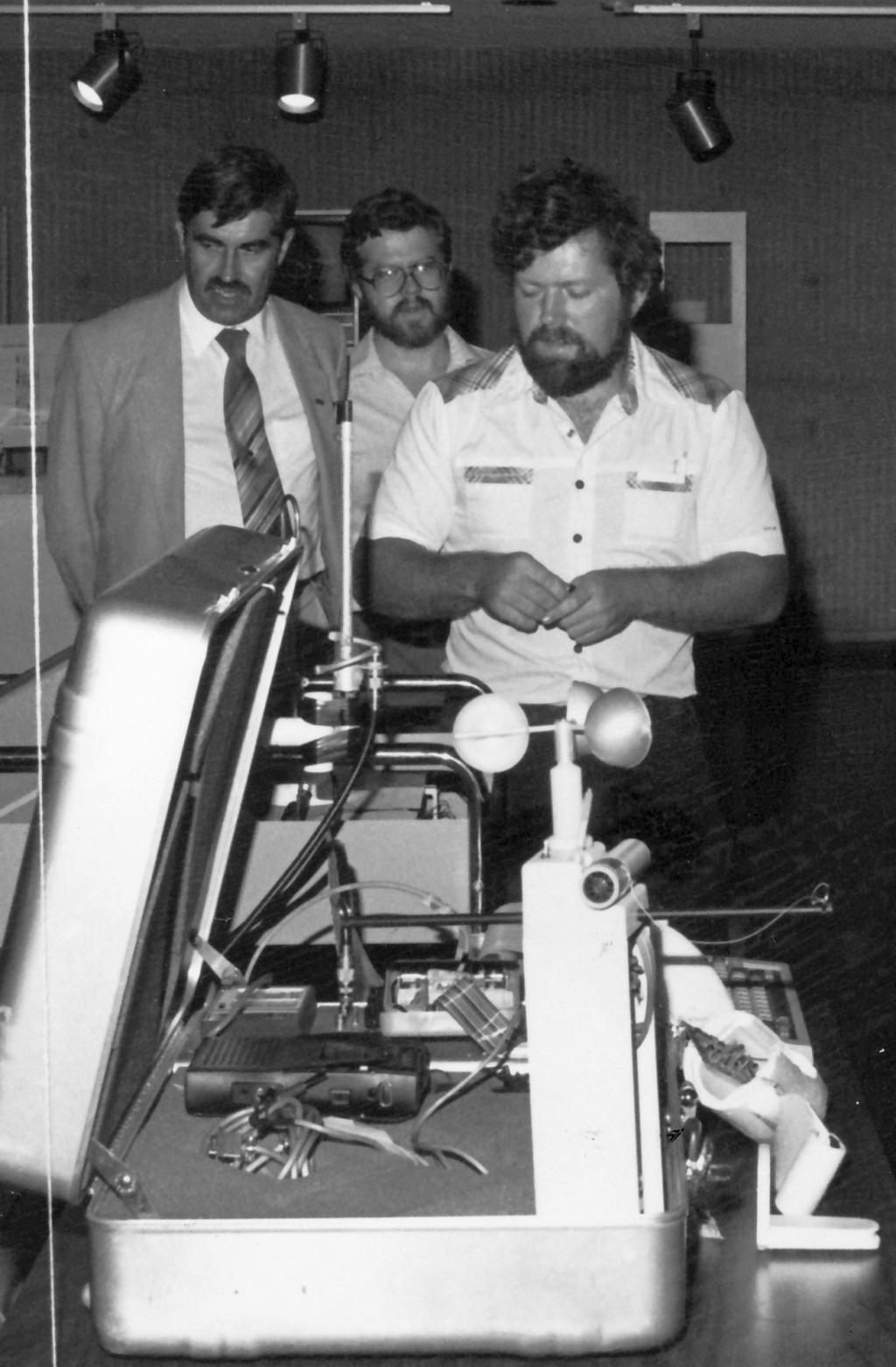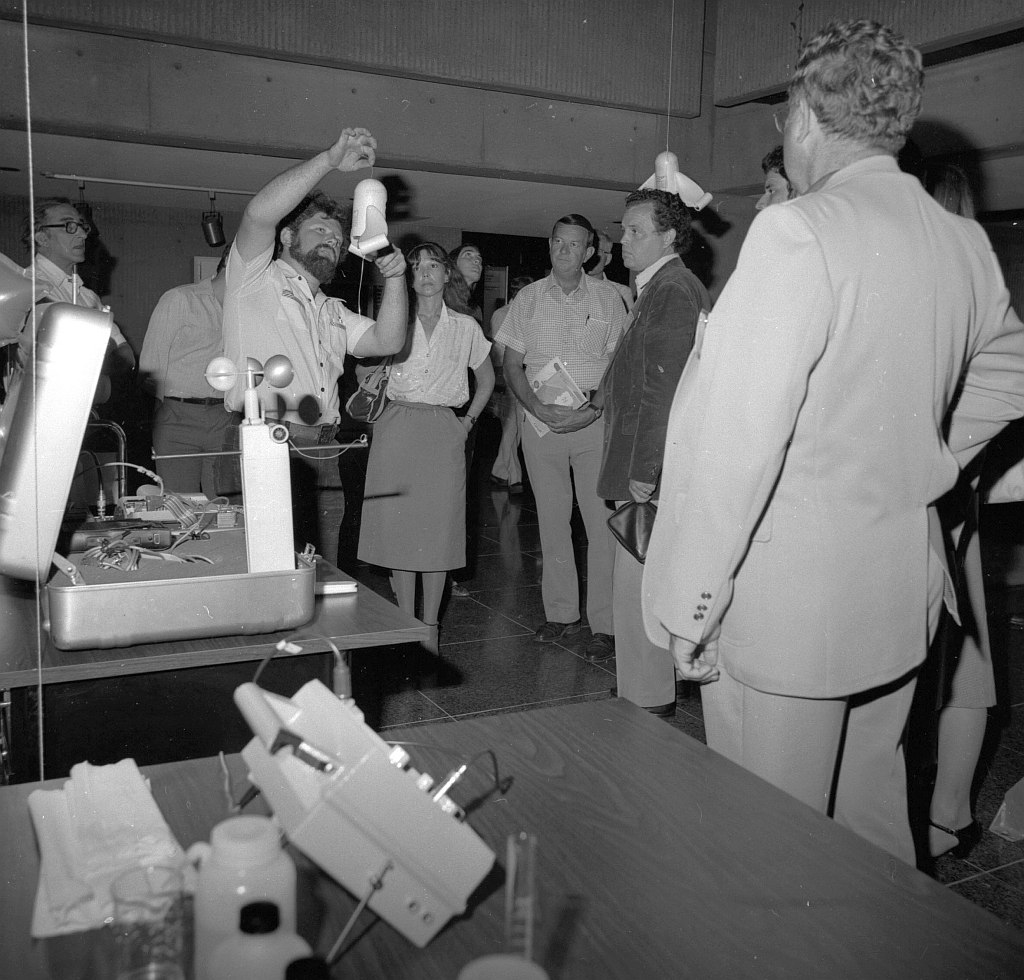 Demonstrations and displays were set up in the Downsview building lobby to coincide with the visit to AES by US Congressional Aides. Wes Kobelka of the Boundary-layer Research Division is seen demonstrating pH monitoring equipment used to measure the acidity of a sample of rain. Wet weather at the time of the visit enabled the sample to be oblained right outside the building. The US visitors have not been identified. |
 Wes Kobelka, right, is shown with one of the US visitors. Tom Agnew is in the middle. |
 Wes Kobelka demonstrates more equipment |
 Malcolm Still (right) briefs US officials |
Complete story as published in the
September / October 1981 edition of Zephyr
* * * US Mandarins get first hand
information on acid rain
Sixteen US congressional staff spent two days in Canada being briefed on the causes and effects of acid rain, the environmental bomb of this decade. The briefing was a joint effort between the Ontario Ministry of the Environment, Environment Canada and External Affairs. The object was to impress upon the congressional staff the seriousness of the environmental threat posed by acid rain, and how relaxing some of the regulations of the US Clean Air Act (up for renewal this September 30) would have dire consequences for the North American environment, particularly in Canada. The schedule of activities began on August 27, 1981 in Toronto with federal and provincial overviews, a film presentation by well-known Chicago TV weather personality Walter Lyons, titled "Satellite Observations of Persistent Pollution Episodes", and presentations and discussions on long-range air pollution. Lunch at the Downsview cafeteria was followed by a quick tour of the satellite laboratory and a live demonstration of acid rain instruments. The visitors, and designated Canadian escorts, then boarded a plane and flew to the Muskoka area. There, facing the seriously affected Plastic Lake, they were informed of recent scientific findings and impacts on water resources, forests and soils. The tour ended in Ottawa, where Deputy Minister Blair Seaborn and a panel of government officials discussed the policy implications and the urgent need to reduce emissions. "Canada and the US must come to grips rapidly with this problem" said Mr. Seaborn, "and develop jointly an effective mechanism to deal with the long range transport of trans-boundary airborne pollution". |